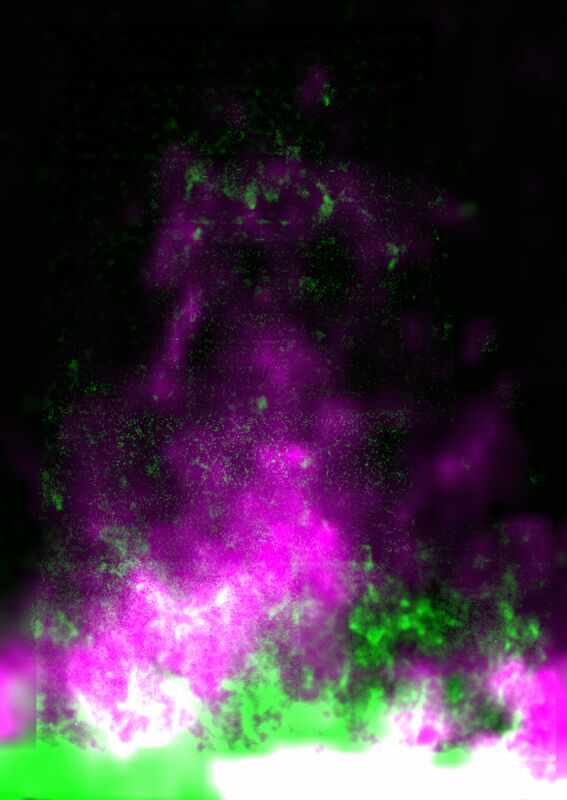Hydrogen Emission from a 30 Myr Old Superbubble II
Description
A nearby superbubble recently discovered with the 100 m Green Bank Telescope (GBT) is shown as a false color image. Green color is neutral hydrogen detected by its 21 cm radio emission, purple -- ionized hydrogen detected by its optical emission, white -- where there are matching amounts of both neutral and ionized hydrogen. The diagonal green stripe at the bottom results from a stretch of cosmic dust known as the Great Rift of the Milky Way, blocking all the light behind it including the superbubble's ionized hydrogen emission, while the radio emission is not hindered by dust. Such superbubbles are known to be blown by powerful stellar winds and supernovae occuring in star clusters in arms of both our and other spiral galaxies. It took approximately 30 million years and the energy of about 100 supernovae to create this one, which is more than 3 kpc high and is located about 7 kpc from the Sun and 4 kpc from the Galactic center. It is currently at the latest stages of its development, its expansion is stopped and its walls are starting to decompose.
HI image: About 250,000 GBT HI spectra integrated over 60-160 km/s LSR. The integration covers all the tangent point velocities at these longitudes. The intensity scale has been multiplied by sine of Galactic latitude to compress the dynamic range and show structures more clearly. Angular resolution is about 9 arcmin. The noise has been removed in areas not related to the bubble. The original GBT HI survey was used for the most of the map, but data from the lower resolution Leiden-Dwingeloo survey by Hartmann & Burton (1997) were used to fill the space around the edges. H-alpha image: integrated over 55-95 km/s LSR, as observed with the Wisconsin H-Alpha Mapper (data of WHAM survey by Haffner et al. 2003 interpolated and imaged by Yurii Pidopryhora). Angular resolution is about 1 degree. Imaging and matching of coordinate systems was done in AIPS++ by Yurii Pidopryhora. Please refer to Pidopryhora, Lockman and Shields paper submitted to ApJ for more scientific information on the superbubble.
Creator
Legacy Astronomical Images
Rights
NRAO/AUI/NSF does not hold full copyright for this image. Contact the archivist for details.
Type
Legacy Astronomical Image
Object Name
Superbubble
Photo Credit
Yurii Pidopryhora, NRAO & Ohio University
Investigators
Yurii Pidopryhora, Felix J. Lockman, Joseph C. Shields
Telescope
Green Bank Telescope (GBT)
Observation Date
2005-08-22
Type of Observation
spectral line
Center of Image
RA 17:45:31.000, Dec: 5:9:3.000 (J2000)
Field of View
25.000000 x 35.000000 degrees
Link to journal article
Notes
Contact the archivist for a high resolution tif of this image.
Series
Galactic Sources Series
Unit
Galactic Halo Unit
Citation
Legacy Astronomical Images, “Hydrogen Emission from a 30 Myr Old Superbubble II,” NRAO/AUI Archives, accessed June 17, 2025, https://www.nrao.edu/archives/items/show/33454.

